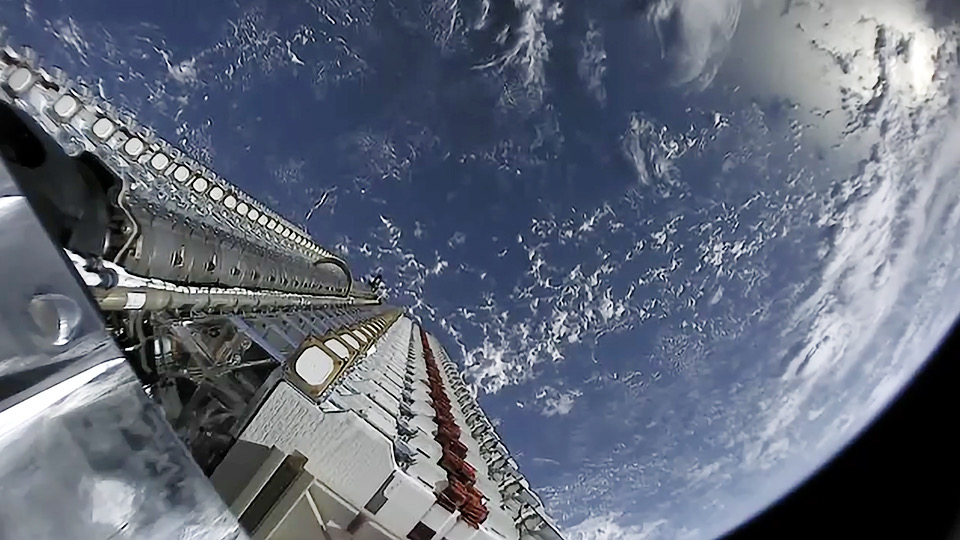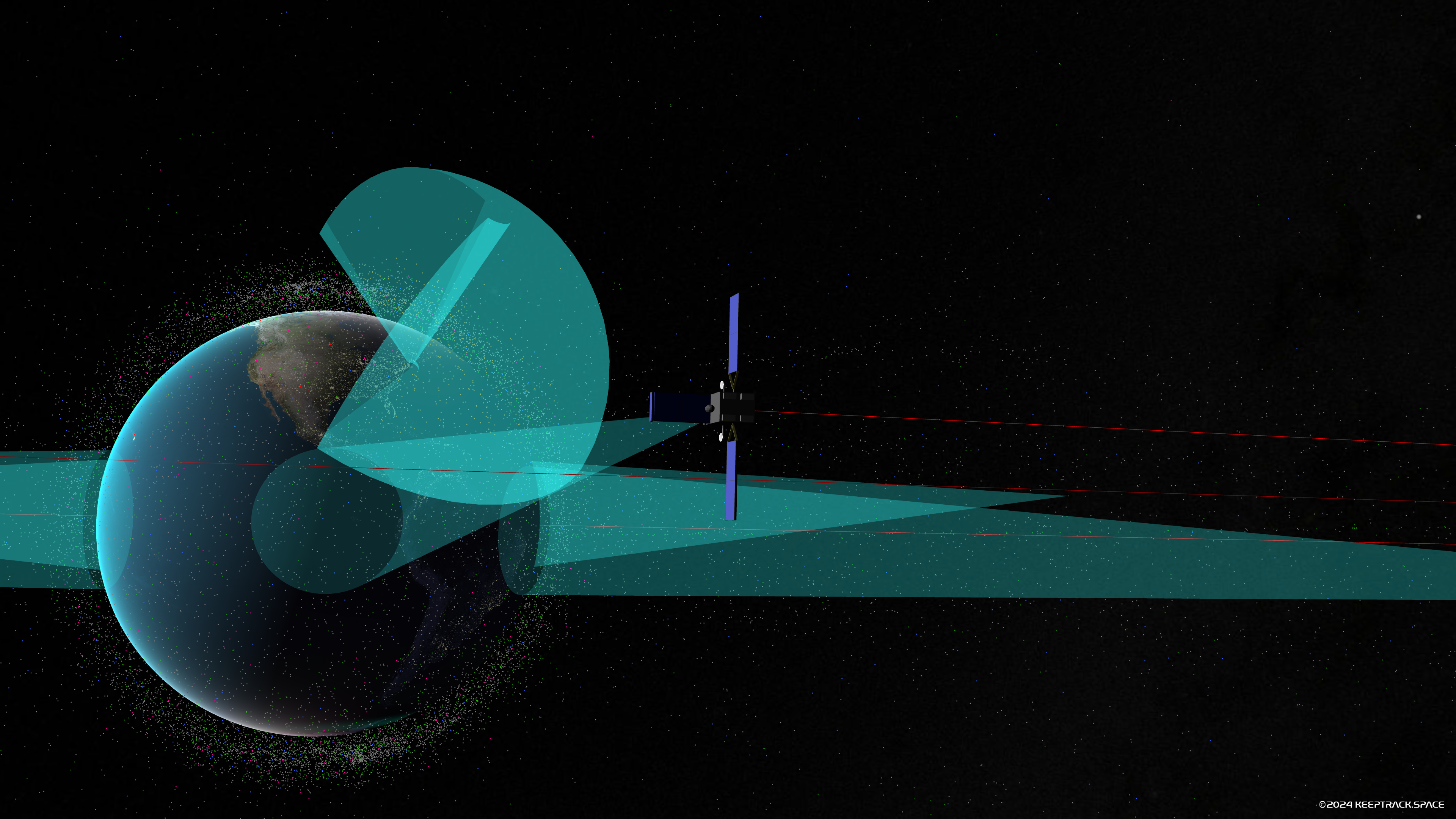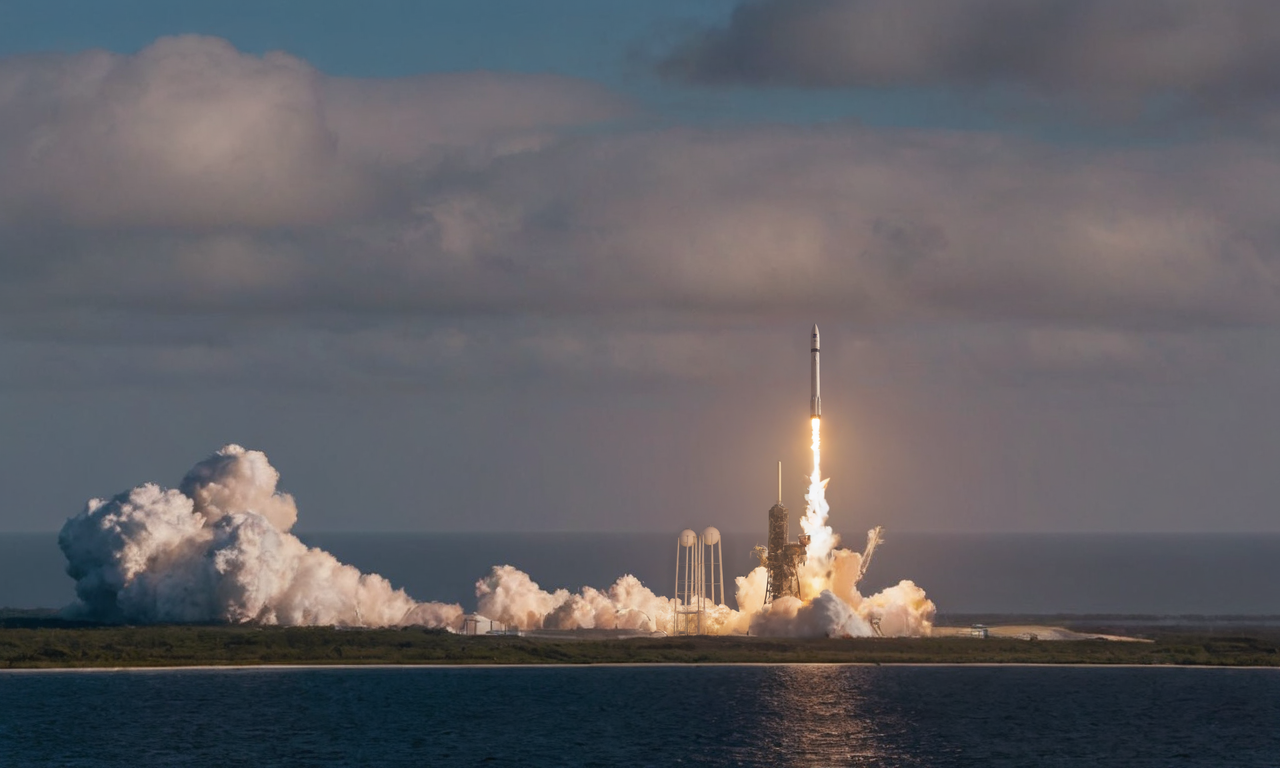· space brief · 6 min read
Space Brief 12 Aug 2025
Today's brief covers a groundbreaking national security mission for ULA's Vulcan, NASA's collaboration with LeoLabs for enhanced collision avoidance, and SEOPS' new satellite tracking services, among other key developments.

📄Top Stories
United Launch Alliance’s Vulcan rocket is set to launch its first national security mission, a pivotal moment for GPS modernization. NASA teams up with LeoLabs to leverage their advanced tracking data for better orbital collision prevention. Meanwhile, SEOPS expands its services, offering innovative satellite tracking and identification tools to its clients.
📰Detailed Coverage
ULA’s Vulcan Rocket Preps for First National Security Mission
United Launch Alliance (ULA) is gearing up to deploy its Vulcan rocket for a significant national security mission this month. The pioneering launch will carry a $250 million military experiment into geostationary orbit, potentially revolutionizing GPS modernization efforts. This milestone highlights Vulcan’s critical role in strengthening national security and technological advancement in satellite capabilities.
With this mission, ULA continues to demonstrate its commitment to delivering reliable and innovative solutions for the military. The event marks a substantial leap for ULA’s launch capabilities, as the military’s reliance on cutting-edge satellite technology grows. This mission reflects broader dynamics in global security, where such advancements are integral to defense strategies. Read the full story: SpaceNews
NASA Assesses LeoLabs for Safe Orbital Operations
NASA has signed a Space Act Agreement with LeoLabs to evaluate their advanced collision avoidance data. This collaboration aims to strengthen flight safety and refine orbital traffic management by integrating LeoLabs’ tracking technology with NASA’s methodologies. The partnership underscores the increasing emphasis on safeguarding spacecraft amid rising satellite traffic.
LeoLabs’ cutting-edge radar systems worldwide detect and track hundreds of thousands of objects in space. By incorporating this data, NASA expects to heighten its predictive accuracy and collision prevention measures, crucial for maintaining satellite integrity and mission success. This partnership aligns seamlessly with the features of our web app, offering enhanced satellite tracking insights. Read the full story: SpaceNews
SEOPS Explores New Frontiers in Satellite Tracking
SEOPS has announced plans to provide customers with comprehensive on-orbit spacecraft identification and tracking services. Collaborating with Digantara, a space situational awareness specialist based in India, SEOPS will offer two months of satellite ID and collision avoidance services free of charge. Clients can opt for extended service to ensure ongoing operational safety and efficiency.
This initiative highlights SEOPS’ commitment to advancing satellite operational safety and navigational precision. It opens new opportunities for satellite operators to maintain awareness and control over their assets in increasingly cluttered space lanes. The integration of Digantara’s data with SEOPS’ solutions promises enhanced situational awareness, crucial for the modern space era. Read the full story: SpaceNews
First DiskSats Ready for Launch
The Aerospace Corporation is preparing for the inaugural flight of the first DiskSats, set to launch later this year. These small, highly maneuverable satellites will serve as a testbed for advanced performance and adaptability in orbit. This launch was moved up to 2025, with four DiskSats expected to mark a new era in satellite technology development.
DiskSats are anticipated to demonstrate superior performance in terms of maneuverability and efficiency, offering novel capabilities for aerospace operations. Their deployment will provide critical data to enhance satellite designs, shaping future missions and the small satellite industry. Read the full story: SpaceNews
Partnership Boosts Edge-AI for SmallSats
ZAITRA and Xiphos have formed a strategic partnership to advance edge artificial intelligence (AI) processing for SmallSats. Announced at the Small Satellite Conference, this alliance meets growing demand for advanced onboard AI applications in small satellite development. Their collaboration promises to enhance SmallSat functionality with cutting-edge technology, providing new capabilities for handling complex tasks autonomously.
Through this partnership, SmallSat developers can expect to leverage high-performance AI processing at the edge, optimizing data processing and operational autonomy. This technological progress will play a critical role in expanding the potential applications of SmallSats in the marketplace. Read the full story: SpaceNews
🛰️Satellite Spotlight
- Satellite Name: EXPRESS AMU-7
- NORAD ID: 50001
- Launch Date: December 13, 2021
- Mission: Communication satellite designed to provide telecommunication services.
- Orbit: GEO (Geostationary Orbit)
- Operator: Russian Satellite Communications Company (RSCC)
- Fun Fact: EXPRESS AMU-7 features a robust payload with 20 C-band transponders, 16 Ku-band transponders, and 1 L-band transponder, enabling versatile communication capabilities.
Track this satellite in real-time on our web app: Track EXPRESS AMU-7
🌌Space Weather
Current space weather shows Enhanced solar wind (515 km/s).
Current
R0 - S0 - G0
Last 24 Hour Maximums
R1 - S0 - G0
Recent Alerts
- Extended Warning: Geomagnetic K-index of 4 expected, primarily impacting areas poleward of 65 degrees Geomagnetic Latitude.
- Potential Impacts:
- Weak power grid fluctuations may occur.
- Aurora could be visible at high latitudes, including Canada and Alaska.
Next 24 Hours
-
Radio Blackouts Probability
- Minor: 55
- Major: 10
- Risk: None
-
Solar Radiation
- Probability: 10
- Risk: None
-
Geomagnetic Storming
- Scale: 0
- Impact: None
- Activity: Low
-
Impact Summary
- Next 24 hours: No risk of radio blackouts or solar radiation storms.
- Geomagnetic outlook: No G1 (Minor) or greater geomagnetic storms are expected.
- No significant transient or recurrent solar wind features are forecast.
- Radiation outlook: Slight chance for S1 (Minor) solar radiation storms over 12-14 Aug.
- Radio blackout outlook: Likely R1-R2 (Minor-Moderate) radio blackouts, slight chance for R3 (Strong) or greater events over 12-14 Aug.
Long Term Forecast
- Forecast of Solar and Geomagnetic Activity 11 August - 06 September 2025:
- Solar activity is expected to be predominantly low with M-class flare activity likely.
- No proton events expected at geosynchronous orbit, barring significant flare activity.
- Greater than 2 MeV electron flux at geosynchronous orbit to reach high levels on specific dates including 11-17, 21-22, and 27-28 Aug, and on 06 Sep.
- Geomagnetic field activity to reach active levels due to waning positive polarity CH HSS influence, with potential G1 (Minor) storming on 18-20 Aug and 28 Aug.
- Anticipated periods of G2 (Moderate) storming on 05 Sep, with active conditions expected on 04 and 06 Sep, linked to positive polarity CH HSS influence.
🚀Upcoming Space Launches
August 12
- United Launch Alliance Vulcan VC4S:
- Mission: USSF-106 from Cape Canaveral Space Force Station, FL, USA (23:59 UTC) This mission for the United States Space Force will deploy various payloads into geosynchronous orbit, including the NTS-3 demonstration satellite.
August 13
-
Arianespace Ariane 62:
- Mission: Metop-SG A1 from Guiana Space Centre, French Guiana (00:37 UTC) This is the first of EUMETSAT’s second generation of Metop weather satellites.
-
SpaceX Falcon 9 Block 5:
- Mission: Starlink Group 17-4 from Vandenberg Space Force Base, CA, USA (02:05 UTC) A batch of 24 satellites for the Starlink mega-constellation for space-based Internet communication.
-
China Aerospace Science and Technology Corporation Long March 5B/YZ-2:
- Mission: SatNet LEO Group TBD from Wenchang Space Launch Site, People’s Republic of China (06:36 UTC) This launch will deploy a batch of Low Earth Orbit communication satellites for the SatNet constellation.
August 14
- SpaceX Falcon 9 Block 5:
- Mission: Starlink Group 10-20 from Cape Canaveral Space Force Station, FL, USA (10:47 UTC) A batch of 28 satellites for the Starlink mega-constellation for space-based Internet communication.
August 15
-
LandSpace Zhuque-2E:
- Payload: Unknown from Jiuquan Satellite Launch Center, People’s Republic of China (01:08 UTC) Details about this mission are yet to be determined.
-
SpaceX Falcon 9 Block 5:
- Mission: Starlink Group 17-5 from Vandenberg Space Force Base, CA, USA (15:44 UTC) A batch of 24 satellites for the Starlink mega-constellation for space-based Internet communication.
August 16
-
CAS Space Kinetica 1:
- Payload: Unknown from Jiuquan Satellite Launch Center, People’s Republic of China (07:25 UTC) Mission details are yet to be determined.
-
SpaceX Falcon 9 Block 5:
- Mission: Starlink Group 10-11 from Cape Canaveral Space Force Station, FL, USA (11:35 UTC) A batch of 28 satellites for the Starlink mega-constellation for space-based Internet communication.
Note: Launch dates and times are subject to change due to technical or weather considerations.

Maurice Stellarski





